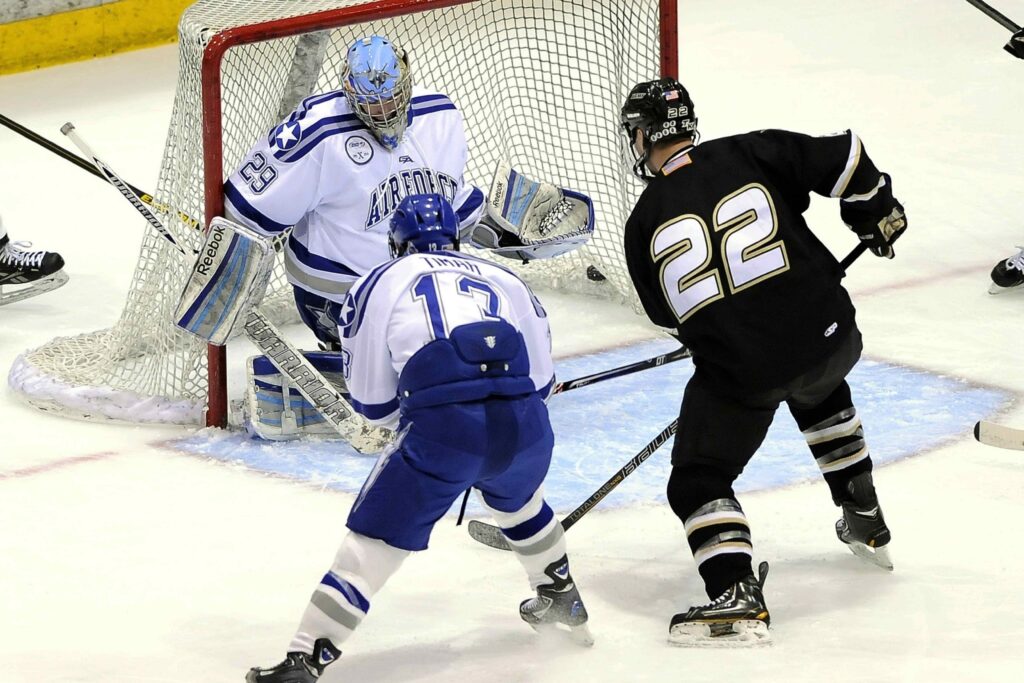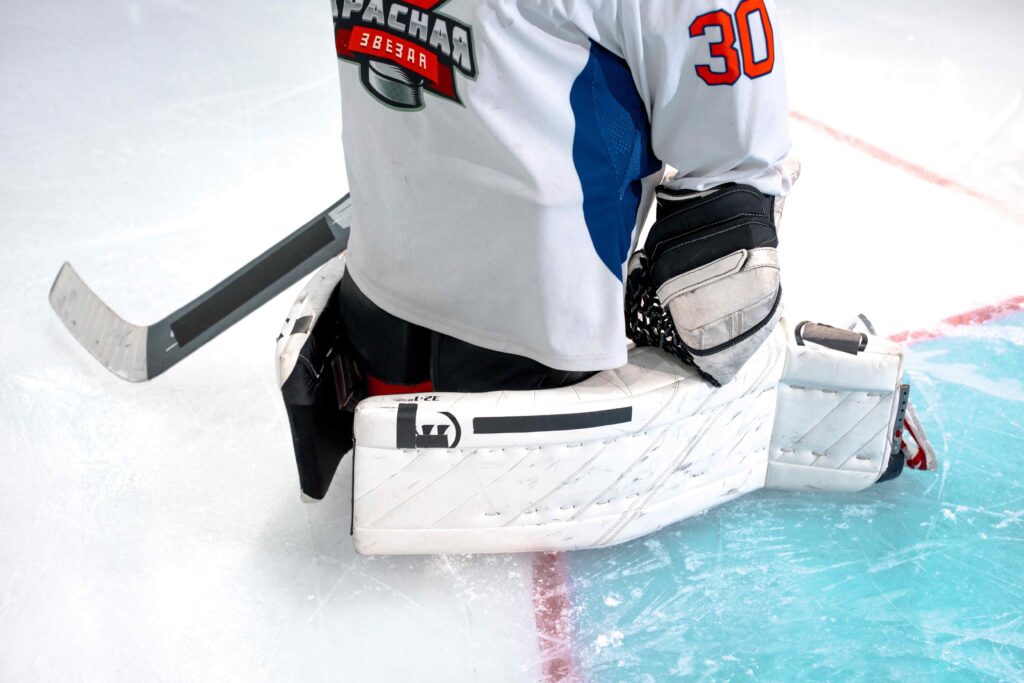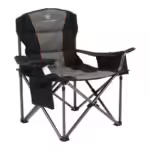Hockey isn’t just a sport; it’s a tapestry of traditions, stories, and symbols that bind its passionate fans and players. From the crowd’s roaring cheers to the unmistakable sound of a puck hitting the net, every element has its place. Among these elements, the jerseys players wear are more than just fabric; they are a canvas of honor and responsibility. While many recognize the captain’s prominent “C” on some jerseys, another emblem – the elusive “A” – garners curiosity. But what does this badge represent? Why is it present on only some jerseys? Dive with us into the rich history and unveil what does the A mean on a hockey jersey ?
The Basics of Hockey Jersey Symbols
Hockey is a sport steeped in tradition, and its jerseys are no exception. These are not just uniforms but represent a player’s role, responsibilities, and position on the team.
Captain’s “C”
Each hockey team is led by its leader, a captain. The captain’s responsibilities go beyond just playing the game. They form a bridge between the party and the adults. Generally, only players could talk to referees about rule interpretations. The “C” on their uniform symbolizes this leadership role. It symbolizes the respect, trust, and accountability that this team and their superiors have.
“A” option
Alternates or assistant captains are not far behind the captain in leadership. They step in when the captain is off the ice and carry the same responsibilities of communicating with officials and guiding their teammates. The “A” on their shirt isn’t just a symbol; It recognizes their ability to lead and how the team relies on them at critical times.
Other signs and symbols
The “C” and “K” are the most recognizable symbols, but hockey jerseys can be decorated with stripes and other symbols. These can range from memorabilia honoring team milestones or important events to special symbols representing the overall league design or cause. Each panel tells a story, and together, they make the team journey a snapshot of the period.
What matters is its role on the ice
Each logo on a hockey jersey plays an important role in the game’s development. They identify leadership positions and serve as reminders of the sport’s cherished traditions, history, and values. In the snow, these symbols are not just patches of fabric; they become guiding lights, helping players navigate the high-pressure situations of the game and reminding them of the honor it is to wear such a jersey.
What Does the A Mean on a Hockey Jersey ?
The “A” on a hockey jersey stands for “Alternate Captain.” This role is crucial in the organizational structure of a hockey team, bridging the gap between players and leaders.
Historical Notes:
The tradition of electing captains and new captains in hockey goes back many years. At its core is the game’s emphasis on teamwork, organization and leadership. Over the past few decades, the roles of captain and alternate captain have become institutionalized and their responsibilities and importance have become clear and defined.
Duties of Alternate Captain
Although the captain is often seen as the primary leader of the team, a guide to team morale, and a key intermediary between the players and coaches, the responsibilities of an alternate captain should not be compromised The alternate captain:
1. Acts as Deputy Captain: Where the Captain is absent, whether due to injury, suspension, or any other reason, another Captain takes the helm. They ensure that the team maintains their composure, abides by policy and remains motivated.
2. Voice on the ice: In times of high pressure, when quick decisions are needed, the alternate captain, and captain, provide critical communication on the ice, to teammates access and assist in decision-making processes
3. Communicate with Officials: Hockey is a fast-paced sport, and can cause misunderstandings or disagreements between athletic officials. Now that the captain is not on the ice, the substitute captain can contact the referees and linesmen, asking for clarification or raising concerns

Selection Process of Alternate Captain in Hockey
selection and characterization
The process of choosing who wears “a” varies. However, the qualities he wants in a supporting officer are consistent:
Experience: In addition to the amount of years playing this game, it includes knowledge of the game’s nuances, tactics and special team dynamics
Leadership: In addition to technical skills, a shift officer exemplifies these qualities by demonstrating motivation, stress management and resilience to many teammates.
An effective new captain inspires not only their skills on the ice but also respect for their ethics, work ethic and dedication to team goals
Many supporting captains
To assure that the captain is on the ice at all times, teams often select two or three captains in rotation. This ensures that leaders will continue to be there through the ups and downs of the game.
In conclusion, the letter “K” on a hockey jersey is more than just a nickname; It symbolizes responsibility, trust in others, and leadership, and indicates the player’s central position in the team’s structure.
What does the letter C mean on a hockey jersey, and what does it stand for?
Ice hockey requires more than simply raw athletic prowess or stunning goals; it also requires teamwork, leadership, and strategy. The position of team captain is denoted by the letter “C” embroidered into a player’s jersey.
What numbers are not allowed to be worn in hockey on jerseys?
The National Hockey League (NHL) permits players to wear any number from 1 and 98, inclusive, as of my most recent update in September 2021. There are a few restrictions and customs to take into account, though:
1. Number 99: Wayne Gretzky, one of the all-time great hockey players, inspired the NHL to retire this number. The number 99 cannot be worn by any NHL player. On February 6, 2000, Gretzky’s number was retired, and no NHL player has used it since.
2. Numbers Retired in Honor of Individual Teams’ Most Iconic Players: While the league as a whole has only retired the number 99, individual teams have retired a variety of numbers in honor of their most illustrious players. For instance, the Detroit Red Wings retired number 9 in honor of Gordie Howe, and the Boston Bruins retired number 4 in honor of Bobby Orr. When a team retires a number, no player on that team can wear that number again until the team decides to unretire it, which happens infrequently.
3. Customary Goalie Numbers: In the past, goalies would don numbers like 1, 30, 31, and so on. Goalies in the modern NHL wear a variety of numbers, therefore this is more of a tradition than a requirement.
4. High Numbers: High numbers, such as those from the 1960s, 1970s, 1980s, and 1990s, were unusual in the past but have recently gained in popularity. For personal or other reasons, some athletes choose for high numbers to indicate their birth year.
Players may don jersey numbers that they wouldn’t ordinarily wear during the regular season during training camps or the preseason. Young athletes who are competing for a spot on the squad frequently use unusual jersey numbers before switching to a more conventional or preferred number if they join the roster.
When enquiring about jersey numbers, always examine the laws of the specific league and the team’s past as customs and practices can change.
Why does a hockey jersey have the word “stop” on the back?
Professional hockey jerseys don’t have the word “STOP” on them, but youth hockey jerseys frequently do, especially in Canada. On the back of young players’ shirts, there is a bright red patch labeled “STOP” that is designed like a stop sign.
This is why:
1. Safety Reminder: The “STOP” sign serves as a visible cue for young athletes to refrain from checking, hitting, or shoving opponents from behind. Hits from behind, particularly ones that go into the walls, can be quite dangerous and lead to catastrophic injuries.
2. Promoting Safe Play: Youth hockey places a lot of emphasis on teaching young players how to play the game safely and responsibly. One of the methods for fostering healthy practices from an early age is the “STOP” patch.
3. Preventing Dangerous Actions: Players can be warned by the bold “STOP” sign to pause before making a potentially hazardous play if they are temporarily upset or acting erratically.
4. Consequences for Removal: In many youth hockey leagues, covering or removing the “STOP” sign on purpose can result in fines or punishments, underscoring the significance of this rule.
The “STOP” symbol on youth hockey jerseys is primarily intended to safeguard young players and provide an environment of safety and respect on the ice. The sign is no longer utilized as players get older and go to higher levels of play, but the lessons it teaches are still very important.
Why do hockey jerseys have to be tied down, and how is it done?
A fight strap, also known as a tie-down strap, is a part of hockey jerseys. It keeps the jersey from being pulled over a player’s head during a fight on the ice. When a jersey covers a player’s head, it can be dangerous. It might make them dizzy and they can’t see, putting them at a big disadvantage. The NHL and other hockey leagues have rules about using fight straps. If a player gets into a fight and their jersey comes off because it wasn’t tied right, they might get a game misconduct penalty. This rule helps keep players safe. It makes sure fights on the ice happen in a safer way.

Can a Goalie Be a Captain in Hockey?
Goalies are usually not team captains in hockey, including the NHL. This is because captains need to talk to referees on the ice, and goalies can’t leave their net often. The NHL rules don’t say goalies can’t be captains. But, it’s not common. For example, Roberto Luongo was the captain of the Vancouver Canucks for two seasons (2008-09 and 2009-10). He was the team leader but didn’t wear the captain’s “C” on his jersey. Other players talked to the referees for him. Goalies can be leaders, but NHL rules and practical reasons often mean they don’t become captains.
Famous Hockey Captains
There have been a lot of legendary captains in hockey. Here are a few of the most well-known hockey captains, along with an overview of their significance:
1. Wayne Gretzky (New York Rangers, Los Angeles Kings, Edmonton Oilers, and Edmonton Oilers): Gretzky, often known as “The Great One,” is widely regarded as the best hockey player to have ever lived. His leadership is renowned both on and off the ice.
2. Mark Messier (Vancouver Canucks, Edmonton Oilers, New York Rangers): Messier, a man renowned for his determination and leadership, is remembered for promising and delivering on a victory in Game 6 of the 1994 Eastern Conference Finals.
3. Steve Yzerman (Detroit Red Wings): Captained the Red Wings for more than 20 years, and in 1997, 1998, and 2002, he guided them to three Stanley Cup championships.
4. Mario Lemieux (Pittsburgh Penguins): Known for his skill and tenacity, Lemieux overcame a number of health issues to guide the Penguins to two Stanley Cup victories in the early 1990s.
5. Jean Béliveau (Montreal Canadiens): During his playing career, Béliveau captained the Canadiens for ten years and led them to ten Stanley Cup victories.
6. Ray Bourque (Boston Bruins, Colorado Avalanche): Ray Bourque played for Boston for the majority of his career, but it was with Colorado that he ultimately won his first and only Stanley Cup.
7. Jonathan Toews of the Chicago Blackhawks: He was a well-known leader from a young age and guided the Blackhawks to three Stanley Cup victories in six seasons.
Sidney Crosby of the Pittsburgh Penguins is number eight. Crosby, one of the most highly regarded athletes of his time, has led the Penguins to numerous Stanley Cup championships.
9. Bobby Clarke (Philadelphia Flyers): In the middle of the 1970s, he captained the Flyers to two consecutive Stanley Cup victories.
10. Zdeno Chara of the Boston Bruins: The Bruins’ 2011 Stanley Cup victory was greatly aided by Chara, one of the tallest players in NHL history, and his inspiring leadership.
These captains are praised for their extraordinary skills as well as their leadership, tenacity, and capacity to motivate their teams to success.
Last Verdict
A hockey jersey’s “A” represents leadership, trust, and responsibility in addition to being just a letter. The position of an alternate captain is crucial to a team’s performance on and off the ice, while frequently being overshadowed by the captain’s “C”. They represent the spirit of teamwork and strategy by serving as the link between the players and the top leadership. The next time you see that letter “A” on a player’s shirt, consider the important function it serves in demonstrating their commitment to both their team and the game of sports. It’s a symbol of pride that is ingrained in the rich culture and history of hockey.
Mustakim Hasan
As an engineer with a keen eye for detail, I combines their technical expertise with a fervent passion for the outdoors. At bestcampgears.com, I share in-depth reviews on the latest camping, outdoor, and sports products, offering readers valuable insights and reliable recommendations. Drawing from personal experiences and a love for nature, I also provides practical tips, tricks, and guidance to enhance your outdoor adventures. Whether you're a seasoned camper or a budding outdoor enthusiast, [Your Name]'s blog is your go-to resource for all things camping and outdoors.
Coleman 8-Person Instant Tent Review: Built for Comfort and Durability
I recently brought the Coleman 8-Person Instant Tent on a camping trip, and it surpassed my expectations in both ease of setup and overall durability. This could be the right choice if ... Read more
Read MoreThe Ultimate Guide to TIMBER RIDGE XXL Upgraded Oversized Directors Chairs
Finding the perfect outdoor chair that combines comfort, durability, and support can be daunting. The TIMBER RIDGE XXL Oversized Chair promises to meet these needs. This chair is a perfect ... Read more
Read MoreThe Ultimate Guide to Car Camping Essentials for Beginners
Car camping can add joy to your soul while saving money from your pocket. I usually go tent camping to relax in nature during my free time or whenever I ... Read more
Read Morebest water bottle for backpacking of 2024
Good camping or backpacking gear will surely immerse your joy in outdoor recreation. Most of the time, I found that backpacking enthusiasts suffer during their camping days due to poor ... Read more
Read More










